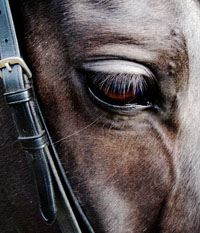Autumn - time to treat against tapeworm - Anoplocephala perfoliata, Anoplocephala magna & Anoplocephaloides mamillana
Diagnosing tapeworm in live horses is difficult as not finding tapeworm eggs in faeces does not mean that the horse is free of tapeworms, therefore egg counts are not reliable in the detection of tapeworm. The ELISA blood test for tapeworm antibodies is more reliable but even that isn't 100%.
Horses become infected with tapeworms when grazing or eating hay or bedding that is infected with the orbatid mite (forage mite) which is the intermediate host of the tapeworm. Eggs develop in the orbatid mite into immature tapeworms (cysticercoids) which will develops into an adult tapeworm in the horses intestine, eggs are spread via the tapeworm segments in droppings.
Tapeworm infestation is a major cause of spasmodic colic, current research estimates that over 20% of cases of spasmodic colic are related to tapeworm burden, they are also responsible for Ileal Impaction.
Exposure to tapeworms is greater during long periods of grazing eg. summer turnout, which is why we traditionally treat fro tapeworm in the autumn and then again six months later. Control tapeworm by worming with Equitape which treats Tapeworm only and should be used in addtion to your normal wormer or use a combination wormer such as Strongid P, Pyratape P, Equimax, Eqvalan Duo, Equest Pramox etc.
Remember keeping the horses enviroment free of dung is the most effective parasite control measure. Dropings should be removed from the field at least twice a week, stables and feeding untensils should be kept clean.




